Elephants: Facts about Earth's largest living land animals
Discover interesting facts about elephants, the highly intelligent and social animals that roam Africa and Asia.
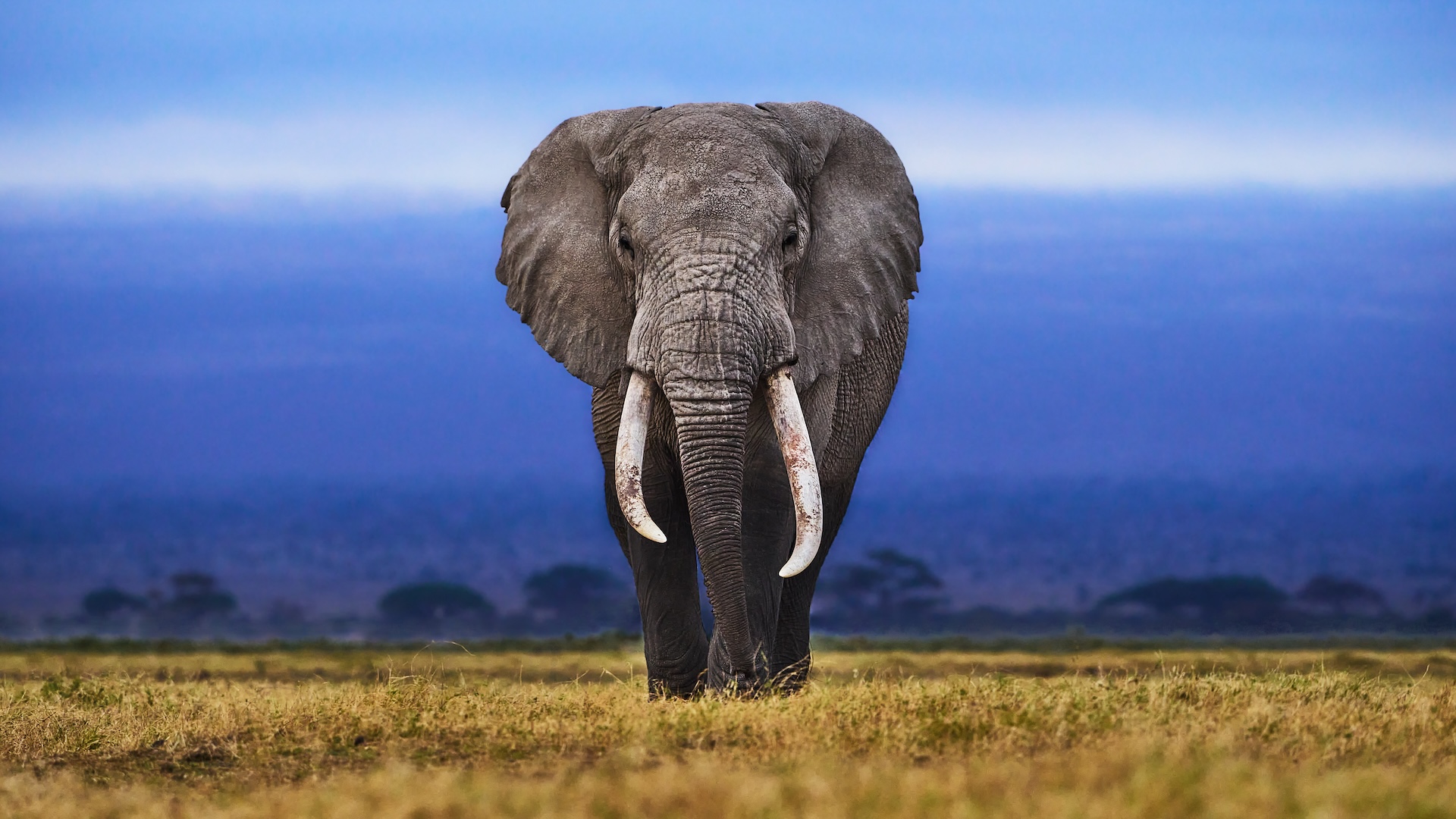
Where they live: Africa and Asia
How big they can get: Up to 15,000 pounds (6,800 kilograms)
What they eat: Grass, roots, leaves, fruit and tree bark
Elephants are the largest land animals on Earth, and they're also one of the most unique-looking animals. With their characteristic long trunks, floppy ears and thick legs, there is no other animal quite like them. Learn more about the different types of elephants, their breathtaking intelligence, and the modern-day threats to their survival.
5 fast facts about elephants
- There are 17 muscles in an elephant's trunk.
- Elephant pregnancies take up to 22 months, and their babies can weigh as much as 350 pounds (159 kg).
- Elephants are right- or left-tusked, just as humans are right- or left-handed.
- Elephants eat more than 300 pounds (136 kg) of food a day.
- Elephants can use their trunk like a snorkel in the water.
Everything you need to know about elephants
What's the difference between African and Asian elephants?
African and Asian elephants not only live on separate continents, but they also look different. African elephants actually include two species: the African savanna elephant and the African forest elephant. The African savanna elephant lives on the savanna and grasslands of sub-Saharan Africa, while the African forest elephant lives in the rainforests of Central and Western Africa. African savanna elephants are the biggest elephant species. They can grow to be 10 to 13 feet (3 to 4 meters) tall, and they weigh 4 to 7 tons (3,600 to 6,40 kg) — about as much as a fully loaded dump truck.
Asian elephants live in the forests and grasslands across South and Southeast Asia. They can grow to be 6.5 to 11.5 feet (2 to 3.5 m) tall and weigh around 5.5 tons (5,000 kg).
African and Asian elephants also have a few different physical features. The ears of African elephants are larger, while Asian elephants have smaller, rounder ears. Both male and female African elephants grow big tusks, but only a few male Asian elephants grow full-size tusks. The rest of the males and females grow smaller tusks, called tushes.
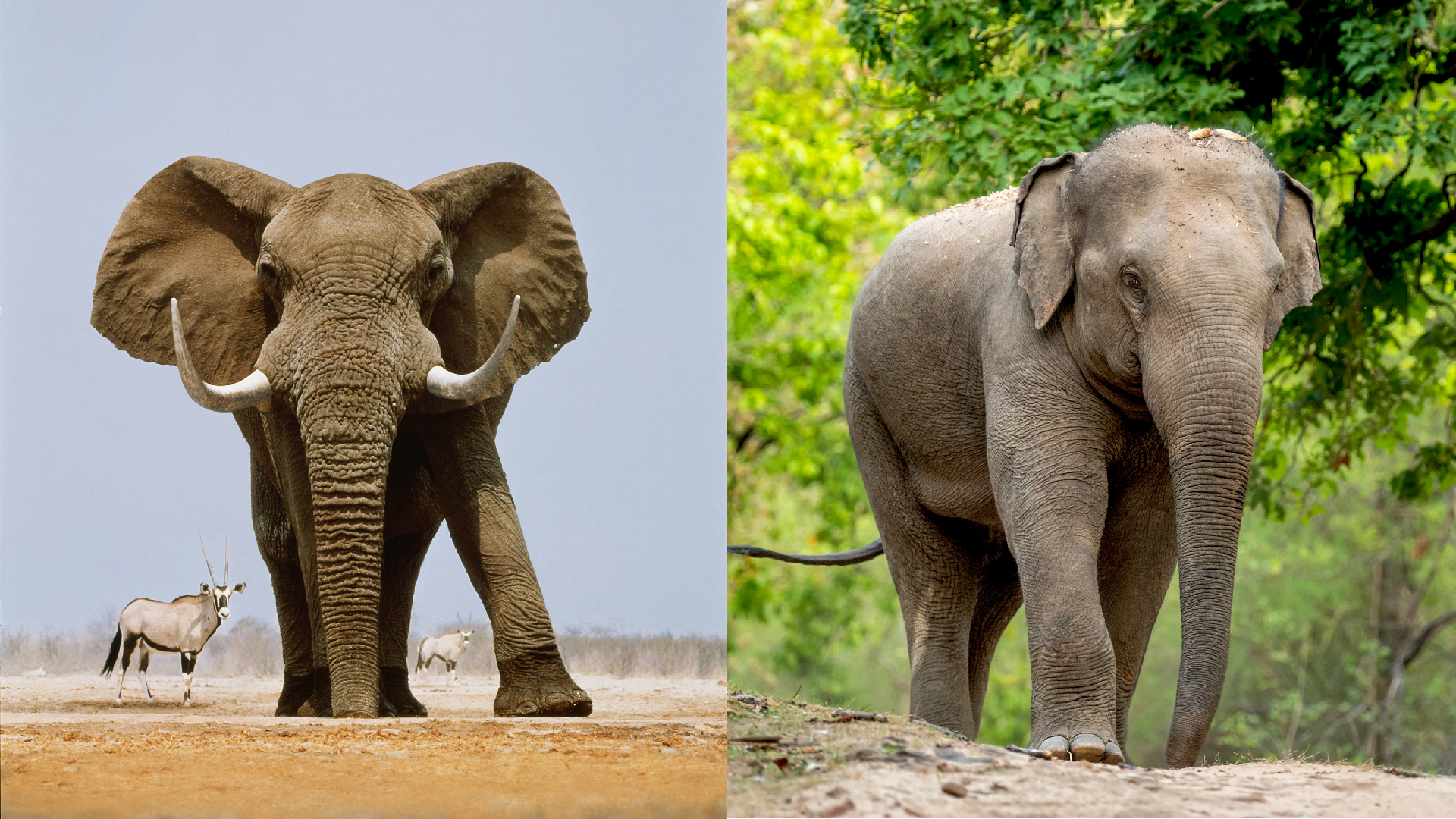
Why do elephants have trunks, tusks and big ears?
Elephants may look strange, but all of their body parts evolved for a reason.
An elephant's trunk is a multipurpose tool that helps the animal breathe, eat, drink, smell and grab things. African elephants have two small "fingers" at the ends of their trunk that they use to delicately maneuver objects. Asian elephants have only one trunk "finger," so they tend to pick up things using their whole trunk. Elephants can store about 1.5 gallons (5.5 liters) of water in their trunk, and they can suck in water 30 times faster than a human sneeze.
Elephants use their tusks to dig, root for food, and defend themselves. Elephant tusks are actually specialized, elongated teeth, and they keep growing for an elephant's entire life. Just like humans are right- or left-handed, elephants tend to use one tusk more frequently. Researchers can tell if an elephant is right- or left-tusked by which one is more ground down.
Elephants' big, floppy ears give them some advantages, too. Their large surface area helps elephants release heat and keep their bodies cool, which is essential in the hot climates they live in. The big sheet of skin also helps direct sound waves toward their inner ears, helping them hear better. And if an elephant feels threatened, it can spread out its ears, making it appear larger and more intimidating.
Are elephants social?
Elephants are very social. Elephants live in herds that follow a matriarchal structure, which means a female is in charge. Female family members and their calves make up a herd, and the oldest female is the leader. Herds have about six to 20 members, and Asian elephants form smaller herds than African elephants do. When the family gets too large, herds split into smaller groups. Male elephants tend to leave their herd in their teenage years and spend the rest of their lives roaming alone or with a small group of males.
To lead the herd, the matriarch relies on her experience and memory to remember where the best spots for food and water are, and where to find protection from bad weather. The matriarch also teaches the younger members of the family how to socialize with other elephants. Elephants pay close attention to the well-being of their entire herd and will do what they can to take care of and protect weak or injured members.
Elephants use sounds, smells and touch to communicate with each other. One type of sound they use is a deep rumble, which is too low for humans to hear. Other elephants can hear this noise from miles away, and they use it to greet their friends, along with flapping their ears and reaching out their trunk. These rumbly noises seem to be specific to individuals, which makes scientists believe the sounds are like names for elephants.

Are elephants intelligent?
Elephants are considered extremely intelligent. They're known for their problem-solving skills, and they can even use tools. Elephants scratch themselves with sticks, swat away bugs with palm fronds, throw rocks at electric fences to disable them, and chew up bark to plug holes in drinking water sources.
Elephants also seem to show empathy and compassion. They appear to grieve their friends and family after they die. And both African and Asian elephants bury their dead.
While "an elephant never forgets" may be a bit of an exaggeration, the animals do have remarkable memories. Elephants file important details in their mind to keep track of food and water and to stay safe on long migration routes. They also remember the hundreds of elephants they meet each year to maintain their complex social lives.
Are elephants endangered?
Asian elephants and both African elephant species are endangered. Many problems endanger the lives of elephants around the world. Poachers, who kill elephants for valuable parts such as their ivory tusks, are a huge threat to African elephants. Poachers kill about 20,000 African elephants each year. There are only around 415,000 African elephants left in the wild.
Habitat loss also jeopardizes both African and Asian elephants. Elephants can lose their homes when humans build towns, farms, roads or fences in areas populated by elephants. And when people start to live or work in elephant territory, conflicts can spring up. Sometimes, elephants may eat crops, destroy property or even injure people, which can lead local people to retaliate and kill elephants.
Climate change is also making elephants' remaining environment less safe. As Earth warms, their home turf becomes more likely to face water shortages, flooding, wildfires and extreme temperatures that make it difficult to survive.
Elephant pictures
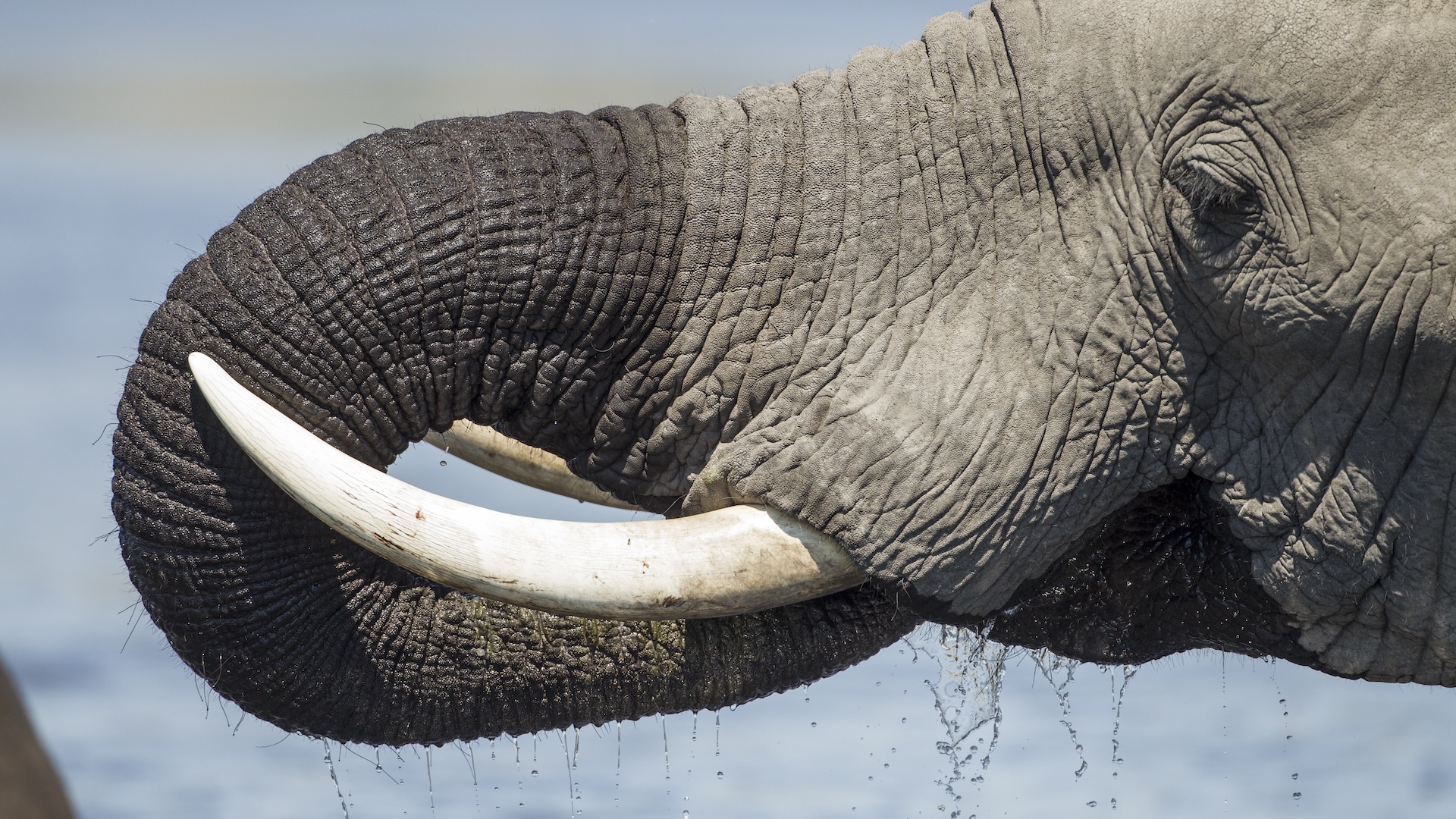
Tusks
Elephant tusks are specialized, elongated teeth. Elephants use them to dig, root for food, and defend themselves.
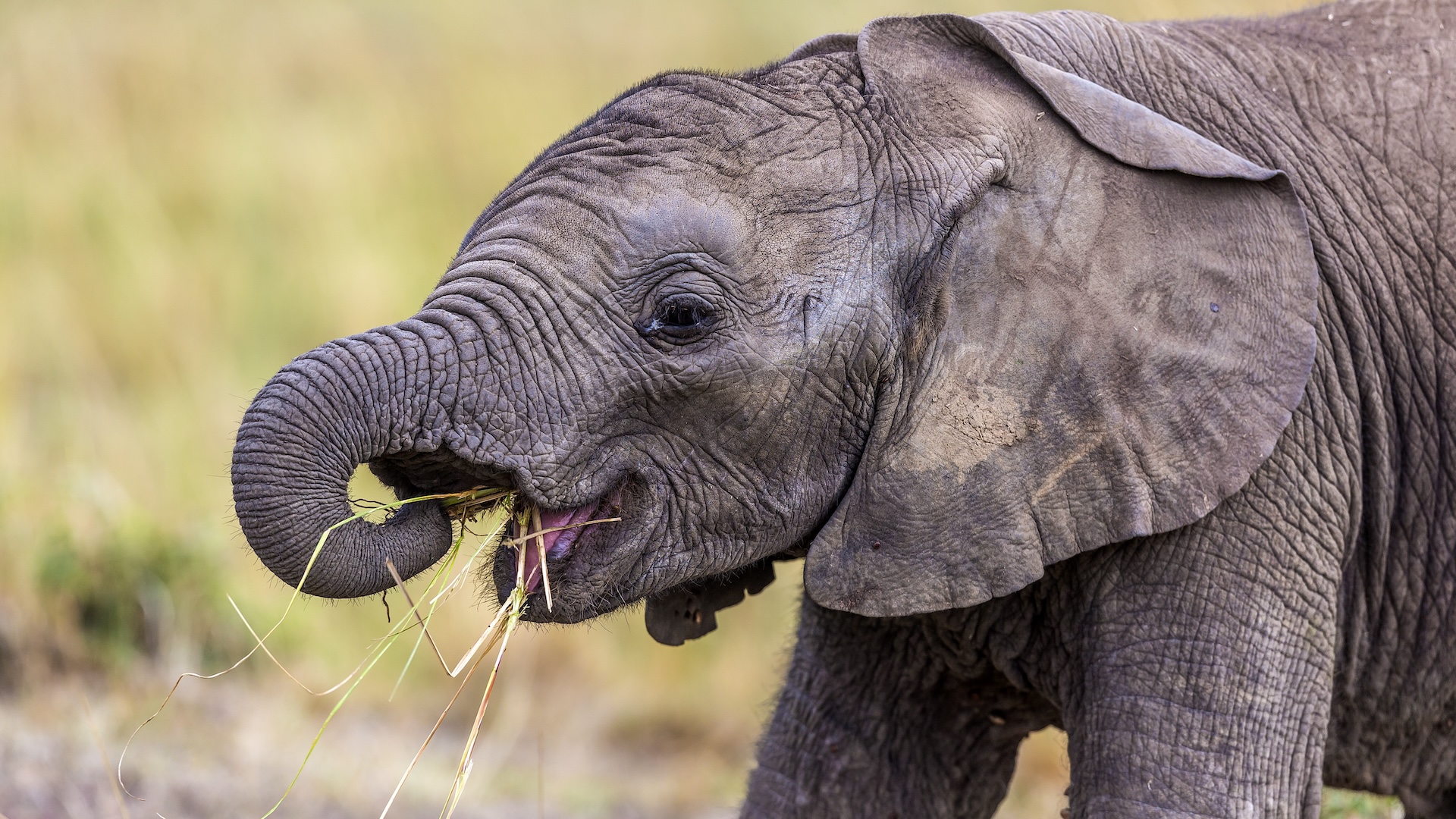
Diet
Elephants spend up to 18 hours a day eating vegetation.
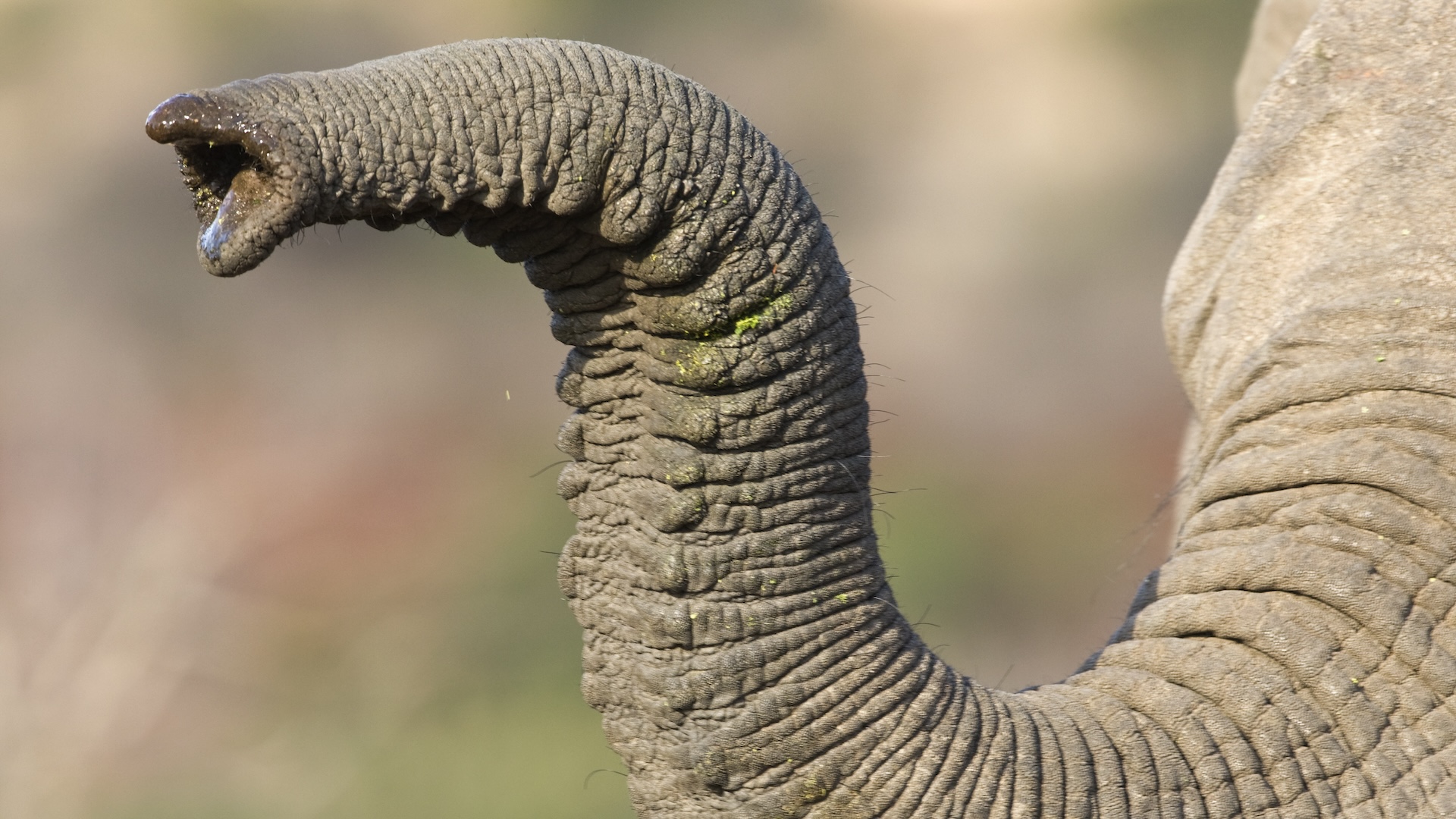
Trunks
African elephants use the two "fingers" on the ends of their trunks to maneuver objects.
Discover more about elephants
—Do elephants really 'never forget'?
—The most surprising elephant relatives on Earth
—Scientists may have finally figured out how elephants got their incredible trunks
Further reading
Check out more interesting facts about African elephants on the Elephants for Africa website. Learn more about elephant conservation from the International Elephant Foundation. And meet the adorable baby elephants being cared for at the Elephants Without Borders elephant orphanage in Botswana.
Elephant quiz: Test your smarts on the world's largest land animal
Get the world’s most fascinating discoveries delivered straight to your inbox.

Marilyn Perkins is the content manager at Live Science. She is a science writer and illustrator based in Los Angeles, California. She received her master’s degree in science writing from Johns Hopkins and her bachelor's degree in neuroscience from Pomona College. Her work has been featured in publications including New Scientist, the Johns Hopkins Bloomberg School of Public Health magazine and Penn Today, and she was the recipient of the 2024 National Association of Science Writers Excellence in Institutional Writing Award, short-form category.
- Rachel RossLive Science Contributor
You must confirm your public display name before commenting
Please logout and then login again, you will then be prompted to enter your display name.
